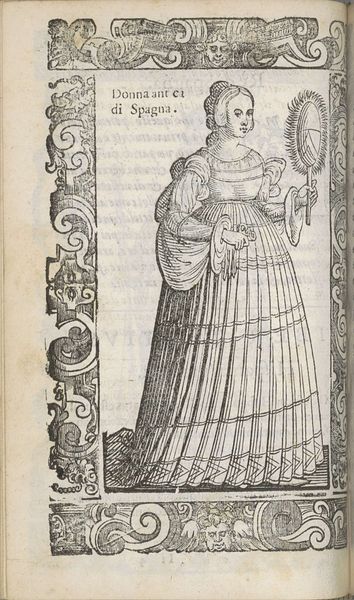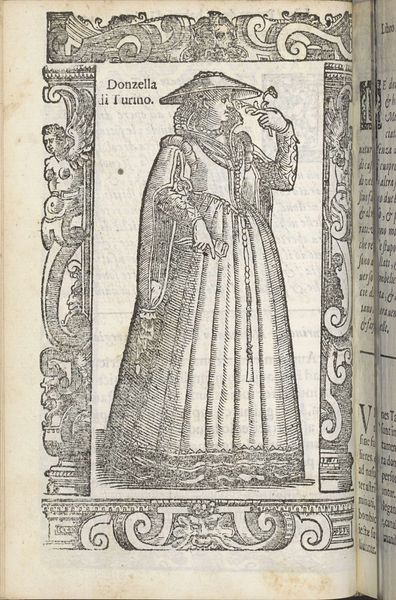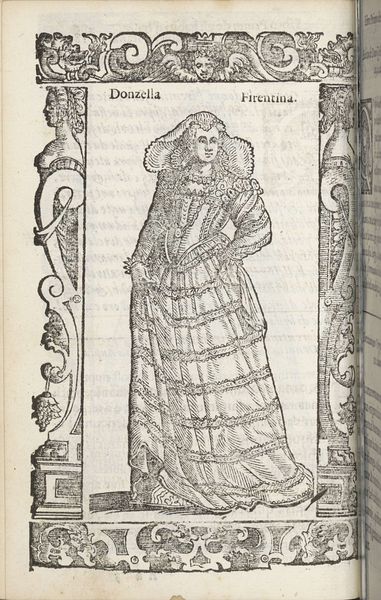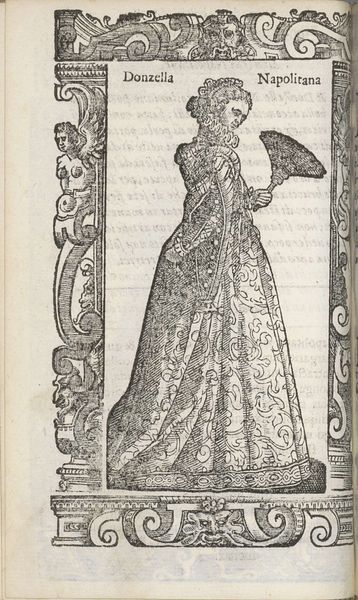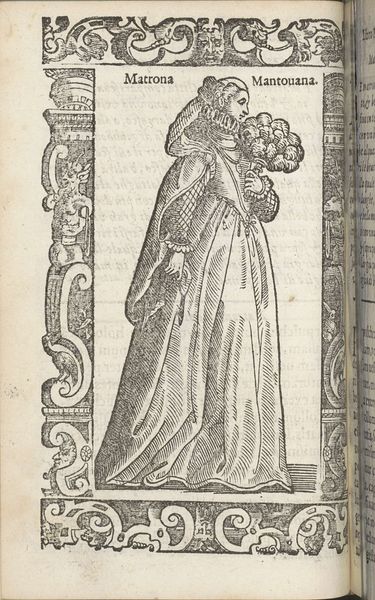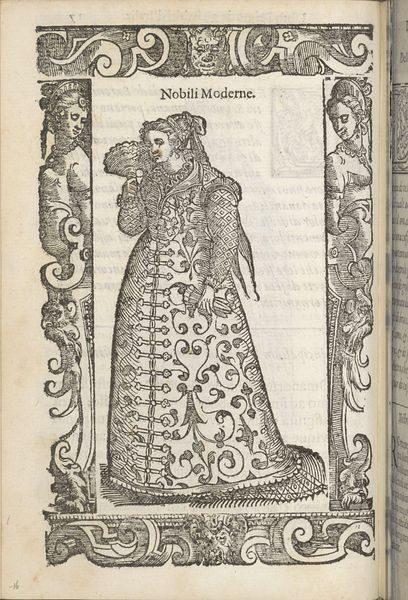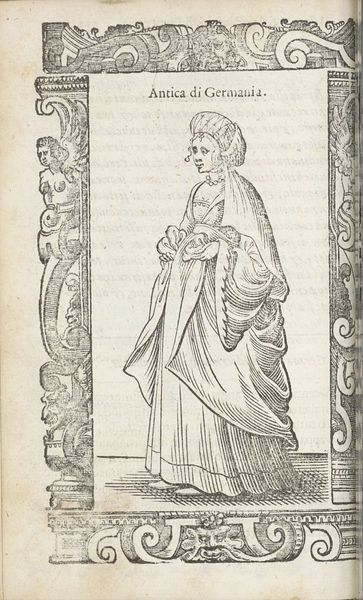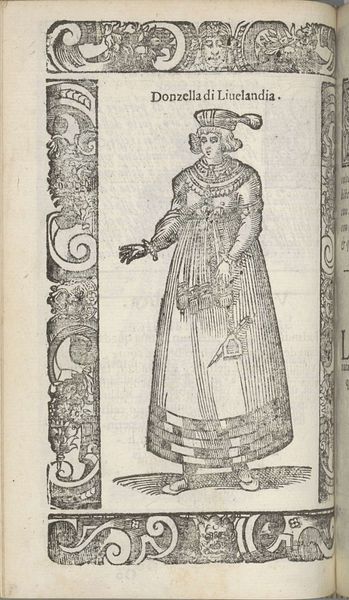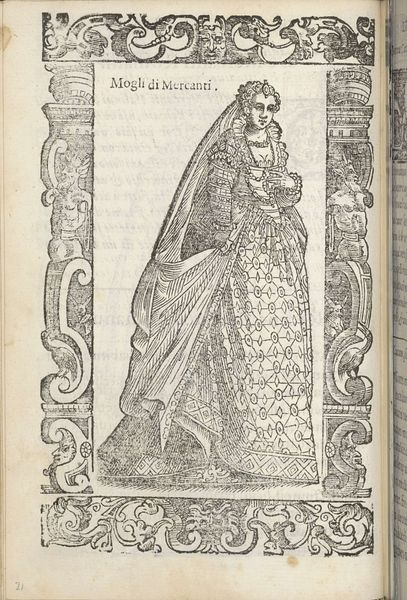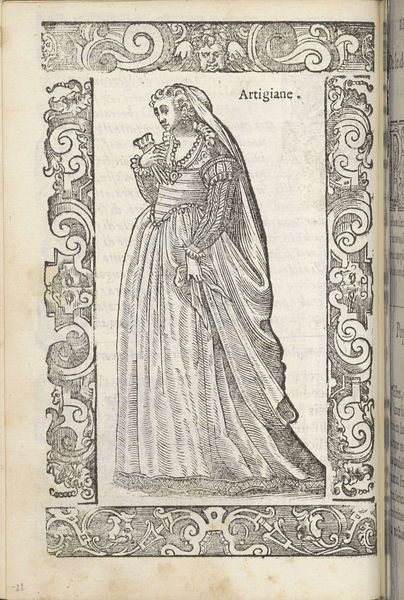
print, engraving
#
portrait
# print
#
pen sketch
#
old engraving style
#
sketch book
#
figuration
#
personal sketchbook
#
sketchwork
#
pen-ink sketch
#
line
#
pen work
#
sketchbook drawing
#
storyboard and sketchbook work
#
italian-renaissance
#
sketchbook art
#
engraving
Dimensions: height 167 mm, width 125 mm
Copyright: Rijks Museum: Open Domain
Editor: This is Christoph Krieger's "Antica Milanese" from 1598, created as a print or engraving. It looks like a page in a book, with decorative borders and a portrait of a woman in elaborate clothing. What structural elements stand out to you? Curator: The strong verticality of the figure, contained within the equally emphatic verticality of the border, strikes me. Notice the almost obsessive detail rendered through line: the hatching that defines form, the ornamental flourishes in the frame. How do these linear patterns create visual hierarchies within the composition? Editor: The density of lines definitely draws my eye to the figure's clothing, especially the flames or teardrops pattern. The border, while decorative, seems less visually complex, acting as a frame but not competing for attention. Do you think the composition follows any Renaissance aesthetic ideals? Curator: The clear articulation of form through line and the emphasis on symmetry do echo Renaissance sensibilities. However, Krieger's deviation from classical contrapposto in the figure introduces a degree of stylization more aligned with Mannerist tendencies. Observe how the figure's rigid posture contrasts with the fluidity of the decorative elements, particularly the flowing ribbons and the elaborate floral motif on the right. Is this interplay intentional? Editor: I see what you mean. The figure is rather static, while everything around her feels more dynamic. So, analyzing this artwork through formal lenses opens an insight into the conversation of aesthetics during Renaissance. Thank you! Curator: Precisely. Examining the interplay of form and structure reveals much about the artistic debates of the period and the artist’s engagement with contemporary styles. It highlights the artwork's complex and contradictory nature.
Comments
No comments
Be the first to comment and join the conversation on the ultimate creative platform.
